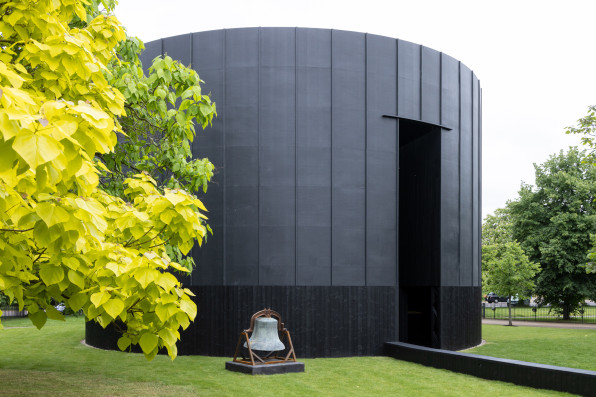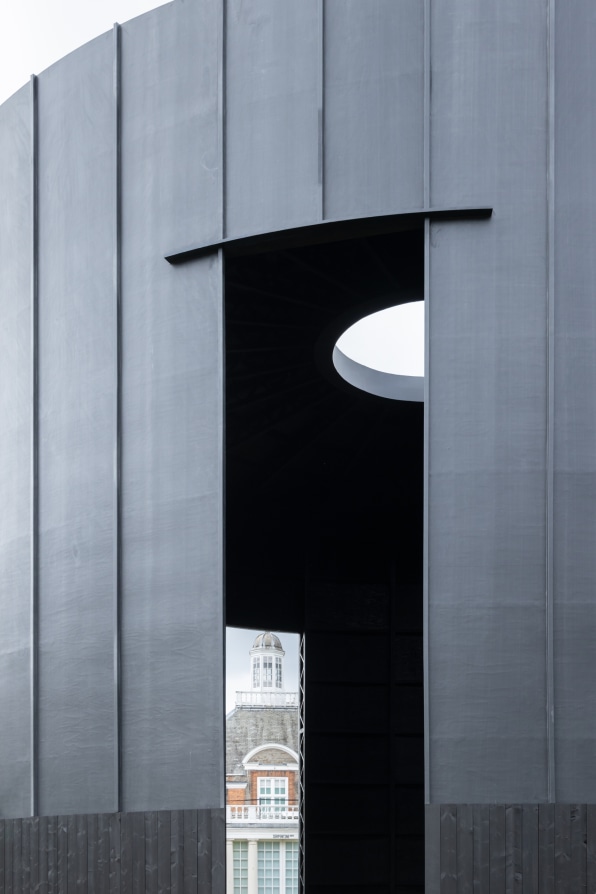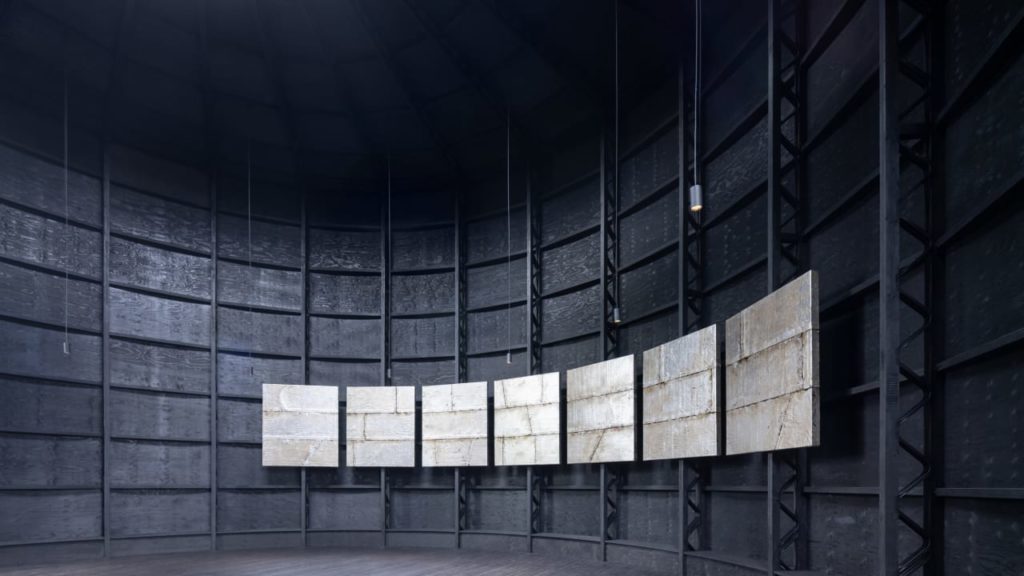On the grounds of the Serpentine art gallery in London’s Kensington Gardens public park, the latest iteration of an architectural spectacle has just opened. The Serpentine Pavilion, a prestigious annual architectural commission now in its 21st year, is a temporary public building featuring boundary-pushing designs by some of the top minds in the field. This year’s version, designed by Chicago-based artist and sculptor Theaster Gates, is a tall, dark, cylindrical building named Black Chapel. Intended to be a space for gathering and meditation, the spare interior is decorated with seven black tar paintings by Gates and lit from above by a central oculus.
But beyond its artistic and architectural substance, this year’s pavilion has a deeper and more impactful message. To the greatest extent possible, Black Chapel was built without any materials produced by slave labor.

In 2022, it’s a shocking truth that many of the materials used in modern construction—from concrete to steel to lumber—are produced with forced or child labor. A recent report suggests that slavery is entrenched in the supply chains of common construction materials, and the construction industry is responsible for up to 18% of the 25 million people enduring forced labor.

These troubling statistics are the basis behind Design for Freedom, a nonprofit focused on bringing transparency to building material supply chains and eliminating slave labor in architecture and construction. Created in 2020 by Grace Farms Foundation, a humanitarian organization in New Canaan, Connecticut, Design for Freedom has gathered leaders from more than 80 design, architecture, and construction companies to try to ensure that the materials they use on their projects are made without forced labor. The effort’s first pilot projects are now being built; Black Chapel is one of them.
For this year’s Serpentine Pavilion, Design for Freedom has served as responsible materials adviser, a role specifically created to focus on the connections between forced labor and the building material supply chain. Grace Farms Foundation worked with the Serpentine gallery and the engineering firm AECOM to trace most of the materials used to build the pavilion, including plywood and timber, steel, concrete, and the membrane utilized to weatherproof the structure. Working with suppliers and manufacturers, they documented the provenance of these materials as far up the supply chain as they could in order to verify, to the extent that it’s possible, that none of the materials were produced in places that use forced or child labor.
Sharon Prince, founder of Grace Farms Foundation and Design for Freedom, says the problem of slavery in the construction materials supply chain is something that the industry can no longer ignore. Having slavery-free materials in a high-profile project like the Serpentine Pavilion, she says, “is accelerating the growing movement to eliminate forced labor from the building materials supply chain.”
Black Chapel isn’t the first Serpentine Pavilion to add a layer beyond architectural experimentation. Last year’s iteration, designed by Johannesburg-based architectural practice Counterspace, explored the use of recycled material in the construction process and the potential for parts of the pavilion to be distributed to public spaces throughout the city after its initial run in Kensington Gardens.
Rather than a one-off architectural folly, the Serpentine Pavilion is becoming a standard-bearer for where architecture and construction can go. Black Chapel shows that the future of building can be slavery-free.
